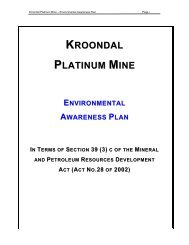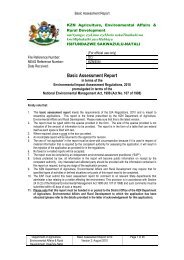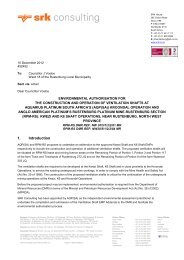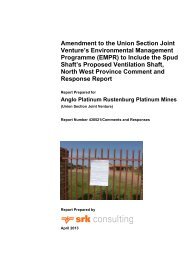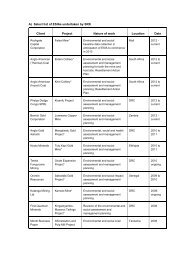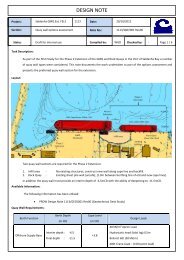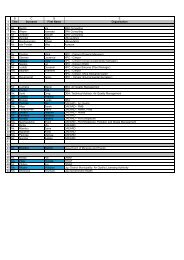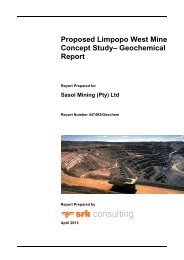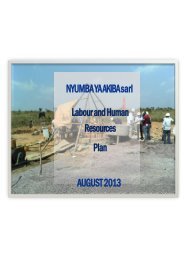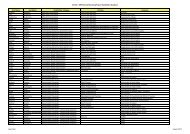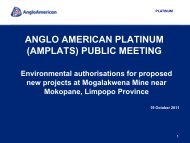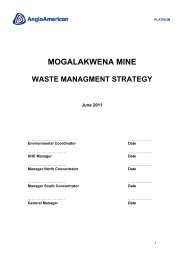Biodiversity (1 - SRK Consulting
Biodiversity (1 - SRK Consulting
Biodiversity (1 - SRK Consulting
Create successful ePaper yourself
Turn your PDF publications into a flip-book with our unique Google optimized e-Paper software.
9. RESULTS: AVIFAUNA<br />
9.1 General<br />
The habitat at the site occurs within the Nama Karoo biome (with Succulent Karoo just to<br />
the west) as identified for bird distributions (Allan et al. in Harrison et al. 1997) and more<br />
specifically the Bushmanland Sandy Grassland vegetation unit (NKb 4), with patches of<br />
Aggeneys Gravel Vygieveld (SKr 19, Mucina & Rutherford 2006). Most of the study site<br />
comprises natural habitats, subject to relatively low stocking levels of livestock (sheep,<br />
goats, cattle, horses), with the most disturbed areas around water points, farm houses,<br />
access tracks and along the old road and water pipeline servitudes north of and more or<br />
less parallel to the N14.<br />
The aerial mobility of birds also demands attention to the principal habitats surrounding<br />
the study site and their conservation status, not just those along the immediate borders<br />
but also more distant habitats that might provide sources for species visiting the site and<br />
sinks for those breeding on site. In this context, the study site is situated in wide<br />
expanses of similar habitat, while more distant sources, such as the Gariep River gorges<br />
are of different habitat and less likely to influence the Aggeneys area.<br />
9.2 On-site Bird Habitat Assessment<br />
The four principal habitat types detected on and/or adjacent to the site, and considered<br />
most relevant to bird ecology and community structure, were:<br />
• Grassy plains. This habitat was most the most extensive on site, recognized by<br />
the flat topography and red sandy surface, but differing in a mosaic of patches by<br />
the amount of grass and/or gravel that was present. Most of it was found in the<br />
broad and ill-defined washes of the Koa River drainage system, but also<br />
extending up slopes to the feet of the various mountains and hills scattered<br />
across the landscape. It appeared dominated by Aristida spp., Stipagrostis<br />
uniplumis and Scmidtia kalahariensis grasses in the more grazed and/or<br />
disturbed areas, and by St. obtusa and St. ciliata in the deeper and more<br />
productive soils. Various herbs and a few woody shrubs were also present in the<br />
more variable and disturbed substrates.<br />
90



